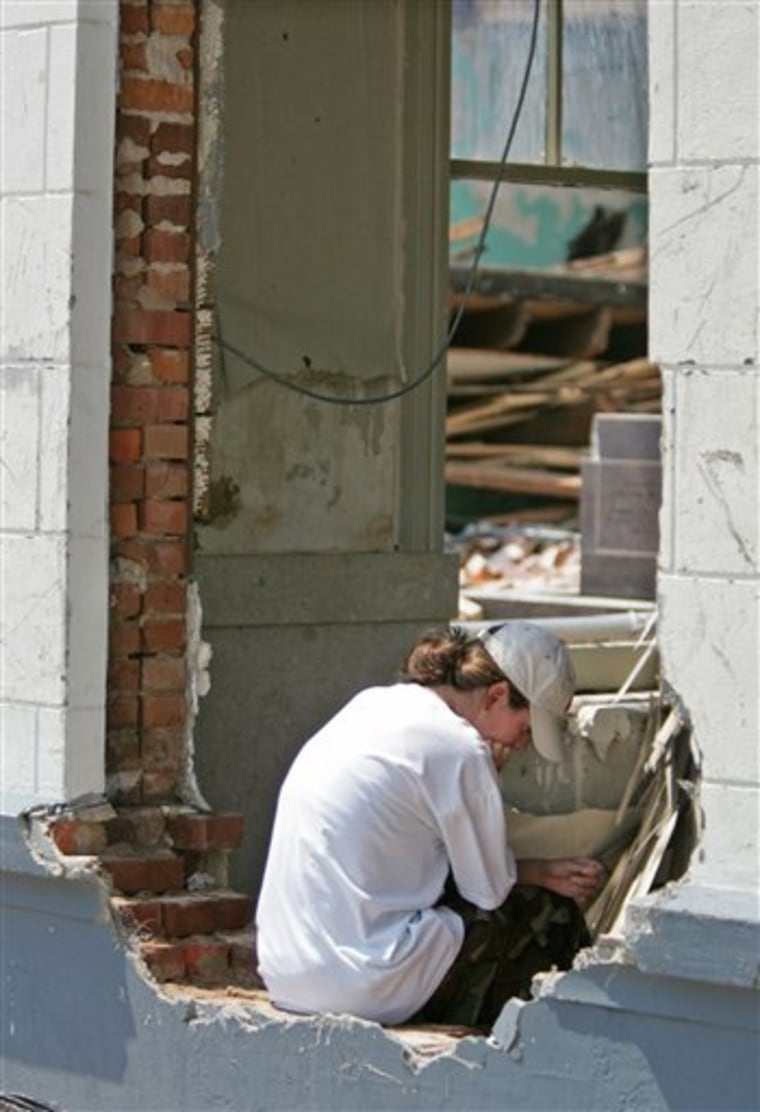The jobless rate in the hurricane-ravaged Gulf Coast is expected to spike to 25 percent or higher, and when the long rebuilding process begins it's likely the same people the economy had left behind before the storm — the unemployed and working poor — will have the most trouble getting back on their feet.
Workers in flooded New Orleans, which faces major cleanup challenges, are taking the biggest hit.
"There's no question that the recovery is going to be much longer and more painful for the 28 percent of the local population in the New Orleans area living below the poverty line," said Liz Ann Sonders, chief investment strategist at Charles Schwab. "It's going to be much harder for the local economy to recover in the absence of resources and insurance."
Lives and livelihoods are in limbo, perhaps for a long time since it could take years to rebuild the city.
"It's just so devastating. You got to shore up the levees and get rid of the water before you can restore the necessities — electricity, water, sanitation, telecommunications. The engineering challenges faced will be gigantic," said Stuart Hoffman, chief economist at PNC Financial Services Group.
Rebuilding strategic oil facilities and ports will be a priority — eventually bringing people back to their jobs, Hoffman said.
But smaller Mom and Pop shops — and their workers — probably face a more precarious future. Some small businesses, restaurants and hotels likely won't reopen. Casinos built on barges along the coast that were damaged or destroyed probably will resume operations, though some uprooted casino workers may seek employment elsewhere, such as Las Vegas or Atlantic City.
"The populations in Louisiana and Mississippi are incredibly poor. Most of the damage was from flooding, which doesn't tend to be covered by insurance. That combination adds up to an incredibly long and painful rebuilding process— I think five to 10 years," said Mark Vitner, senior economist at Wachovia.
Mississippi last year ranked the lowest among all 50 states in terms of per capita income, $24,650, according to the Commerce Department's Bureau of Economic Analysis. Louisiana was ranked No. 42, with per capita income of $27,581. Alabama placed 40th, with per capita income of $27,795. The nationwide per capita income last year was $32,937.
Poverty rates for the three states also are higher than the national average.
It's too early for any hard numbers on how many people have lost their jobs because of the hurricane.
Phil Hopkins, managing director of U.S. regional services for Global Insight, estimates at last a half-million people, while Rajeev Dhawan, director of the economic forecasting project at Georgia State University, said it may be 1 million.
The situation probably will propel area unemployment rates into double digits in coming months, even when accounting for employment gains from rebuilding efforts, Hopkins said.
The seasonally adjusted unemployment rate in the area of New Orleans, Metairie and Kenner was 4.9 percent in July, Hopkins said, based on his calculations. He said the jobless rate there could easily climb to 25 percent.
In the storm-slammed area of Gulfport and Biloxi, Miss., the seasonally adjusted unemployment rate in July was 5.7 percent, Hopkins said. That rate could rise to around 20 percent or higher, he added.
"It's a pretty sizable impact. Commerce has come to a standstill in those counties that were hit," Hopkins said.
The unemployment rate for the United States as a whole was 5 percent in July.
To help ease the economic pain, the Department of Labor announced Friday that it is providing an emergency grant of up to $50 million to create 10,000 temporary cleanup and recovery jobs for displaced workers in Mississippi.
Those who are out of work and have questions about, among other things, collecting or filing for unemployment benefits can call a toll free number, 1-866-487-2365, to get help, said Pam Groover, a spokeswoman at the .
Unemployment benefits typically run for 26 weeks. Congress has the power to extend them and has done so in the past during troubled economic times.
Though the affected communities account for a small slice of the United States' overall economic activity, the storm's economic impact is being felt by consumers and businesses around the country because the Gulf Coast region is an essential hub for oil and gas production and distribution. The area also is home to vital shipping and transportation links that allow grain and other goods to flow out of the country and coffee, bananas and other cargo to flow in.
The powerful and deadly Katrina — likely to be the costliest natural disaster in U.S. history — has knocked out oil refineries, shuttered businesses and crippled the flow of commerce through ravaged ports, roads and railways.
On Capitol Hill, lawmakers are talking about ways to help out local economies. That includes the possibility of loans, loan guarantees or direct assistance to state and local governments in Mississippi, Louisiana and Alabama, said House Majority Whip Roy Blunt, R-Mo.
"We also need to be looking at the long-term economic impact not just to the states affected, but to the economy of the entire region," Blunt said.
